Carpet and rug have always been an essential element of human life. The practice of using wool dates back several millennia and appears to originate from parts of China and Iran. The oldest trace of the knotted carpet is in Siberia and dates from the 5th century BC. The emergence of this technique across the planet coincides with the use of making ornamental pieces for floors or blankets for the colder months.
This sheep’s wool floor covering would gradually over time become a common and customary object, but carrying, refined and proud, the cultural singularities of its creators. Thus in Morocco, in the imperial cities as in the Berber regions, the carpet has become an art craft which finds place alongside the great traditions of the weavers from Europe, Persia, Asia and ‘East.
In Morocco, this carpet weaving has been cultivated along two traditions. Rugs made in cities, such as Rabat, Fez or Mediouna, clearly affirm their oriental inspirations which appeared at the end of the sumptuous Andalusian period when the Muslim artisans then present in Spain had to join Morocco around the 15th century. The traditional carpet Berber seems to be rooted in older times. Correspondences can indeed be observed between some traditional patterns and rock drawings very widespread in the south-eastern region of Morocco which date back several millennia.
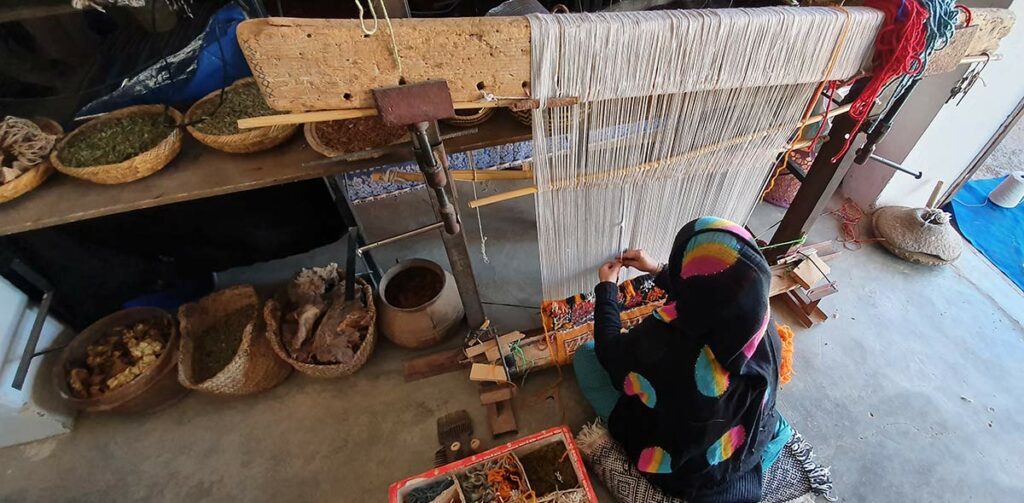
Lorem ipsum dolor sit amet, consectetur adipiscing elit. Ut elit tellus, luctus nec ullamcorper mattis, pulvinar dapibus leo.

Order your Berber carpet right from the source; from Moroccan women expert in the ancestral art of weaving.
The Arabic word for carpet is “zarbia”, and the Berber word is “tazerbyt”, meaning “flowery flowerbed” or “something stretched out on the ground for support”. In Morocco, we also use the word qtifa, of the same origin, which designates high-wool carpets, generally woven in high-altitude regions.
The Berber art of weaving, also called Azetta, is a traditional rural art practiced by women of nomadic or semi-nomadic peoples. It is quite naturally the art of the Berber tribes. Coming from one of the three large Berber groups (Masmouda, Zénètes and Sanhadja), each tribe has developed during its history and its movements a particular aesthetic and technical style in the weaving of its rugs and carpets. More than a utilitarian craft, weaving has thus become the banner of tribes’ name, to express their respective qualities, their simplicity, their rusticity and their sobriety, but also their liveliness made of good humor and almost naive melancholy.
Unlike oriental style rugs, Berber rugs are not woven from pattern and are based on the sole inspiration of the woman who makes them, each piece of weaving is thus unique.
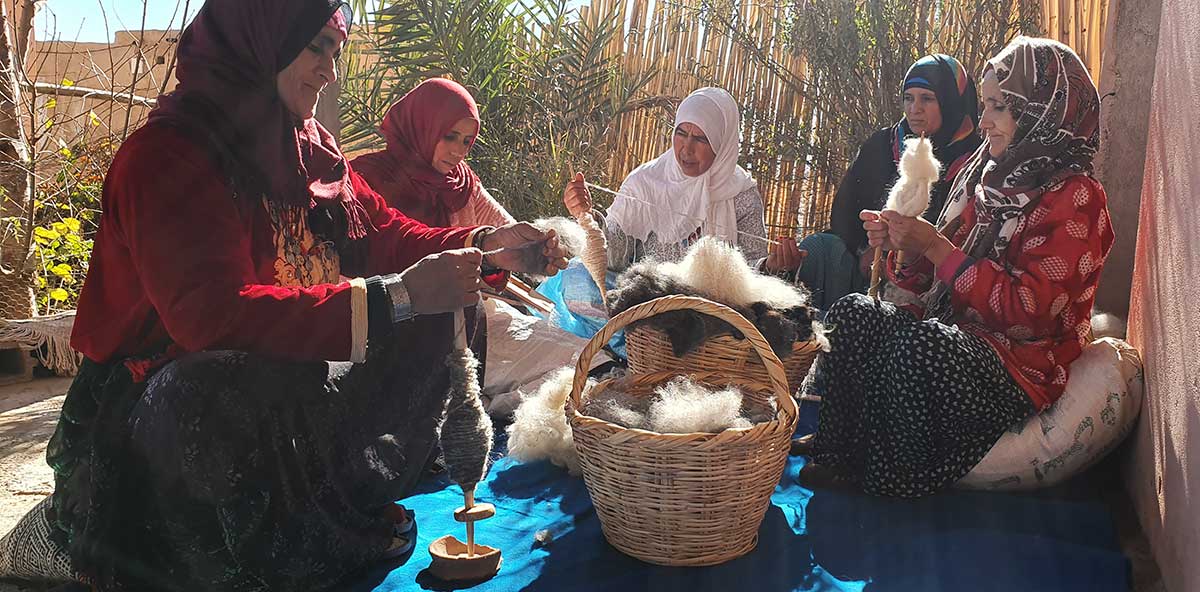
The Berber carpet is first and foremost that of Berber women, these women living in the rural part of the country and the Atlas mountains. From mothers to daughters, they pass down weaving techniques such as patterns in which abstract and enigmatic geometry is combined with symbols of Tifinaghe, the ancestral writing of the Amazigh people, or even with universal images representing scenes from daily life (animal figure, drawing of birds, camels …).
Carpet weaving is a vital activity for these Berber families with a nomadic and pastoral tradition. They thus find one of their main sources of income.
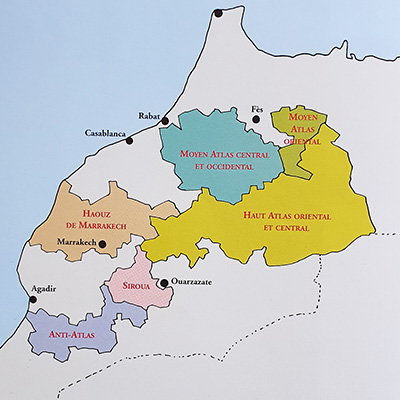
Finally, the Berber carpet is the deep and authentic echo of the territories that have welcomed these tribes for centuries as to become over time, and especially since their settlement, the miror of their identity.
The art of Berber carpet is therefore differentiated from the different Moroccan territories located around the Atlas Moutains :
Between Tazenakhte and Taliouine, 85 km south of Ouarzazate, is one of the main cradles of Berber carpet production. Between Tazenakhte and Taliouine, 85 km south of Ouarzazate, is one of the main cradles of Berber carpet production. This is the territory of the confederation of Aït Ouaouzguite tribes which gathers the Amazigh populations of the High Atlas around the Jebel Siroua.
These tribes are made up of populations from two of the Amazigh root groups, the Masmouda and the Sanhadja. Formerly nomads, these different tribes have long settled down while preserving their pastoral activity.
Emblem of the High Atlas, Aït Ouaouzguite rugs have always been appreciated for their flexibility and lightness due to the quality of their wool, but also for the brilliance of their colors based on natural dyes which weavers still master. the manufacturing technique. These rugs often have an elongated shape in accordance with the measurements of the living rooms for which they are intended.
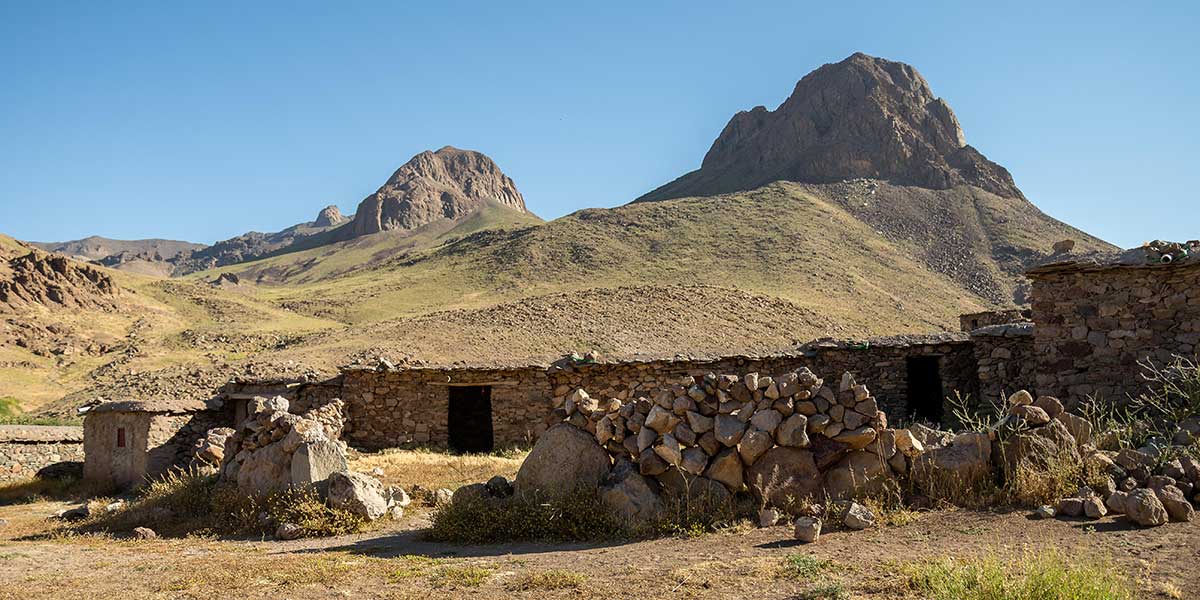
Aït Ouaouzguite rugs are characterized by their use of a large decorative repertoire made up of many symbols and other various patterns.
For a long time these carpets were called Glaoua carpets, from the name of the family of the great caïds who reigned over the entire South East region of Morocco from the mid-19th century until the independence of Morocco. This is why we can observe on the carpets woven from these territories geometric patterns already used on the facades of the various casbahs built and inhabited by these caïds, such as the casbah of Telouet, Tifoultoute or Taourirte.
Ouaouzguite rugs are distinguished by the weaving technique used:
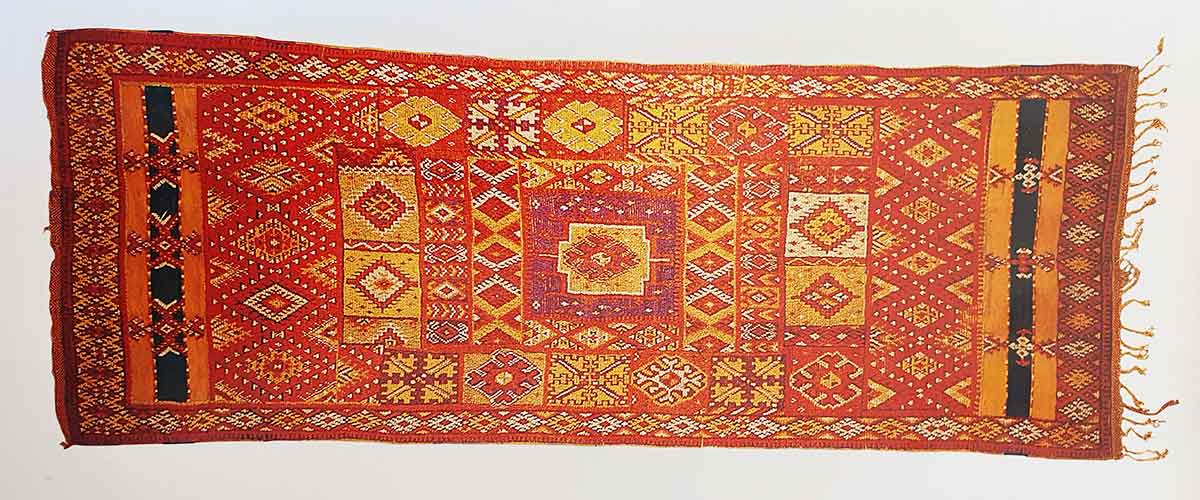
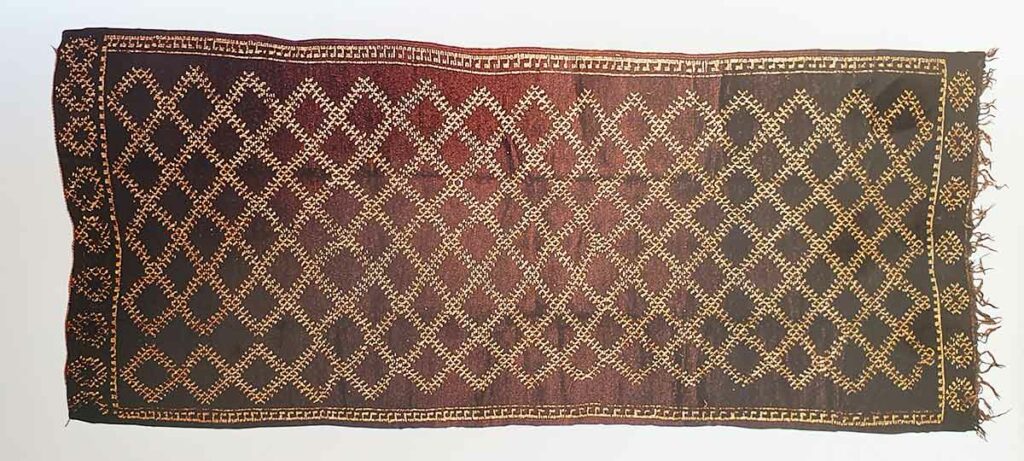
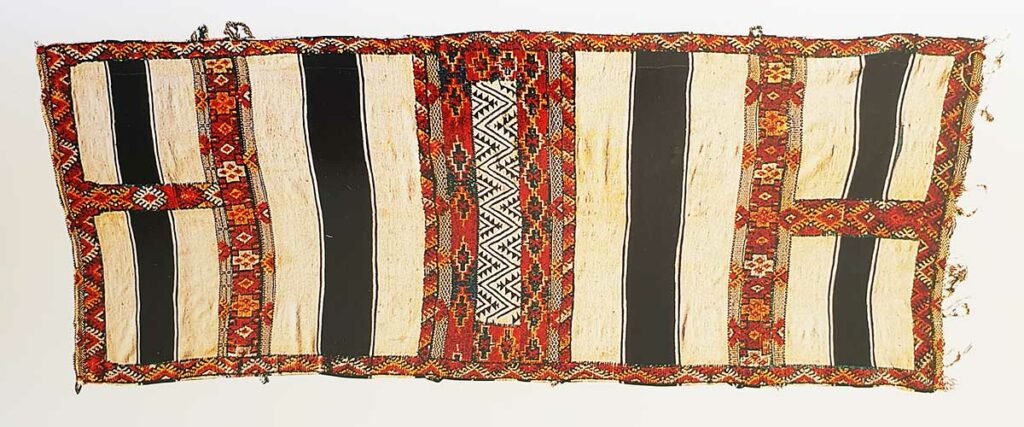
In the past, Berber women used to dye wool themselves using plant and mineral products. Tradition dictated that the weaver preparing the dyeing process purified herself beforehand by taking a ritual bath.
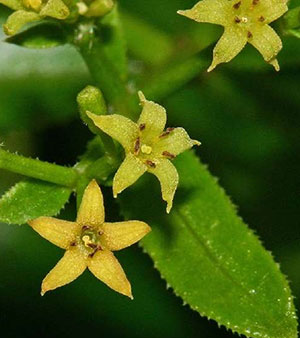
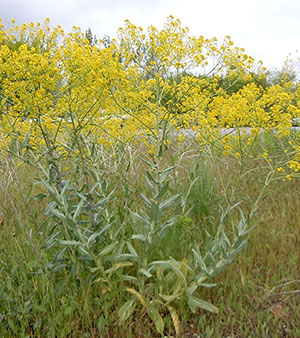
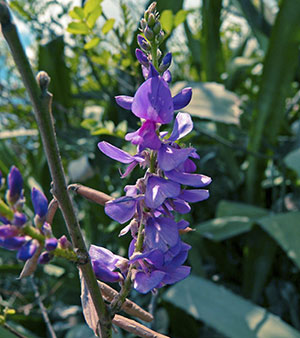
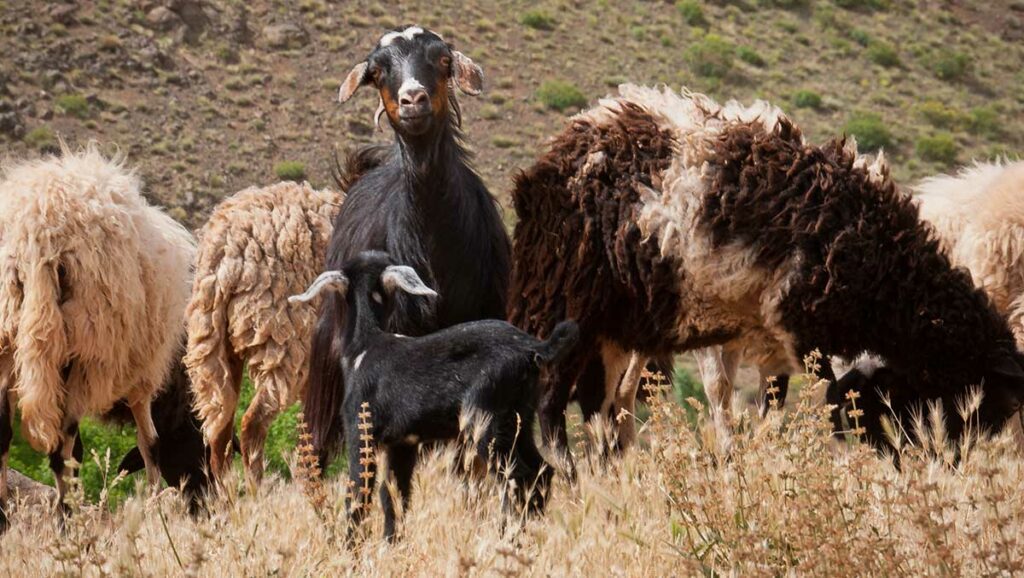
The decorative motifs employed serve as an expression of the artisan’s tribe culture. These motifs are intertwined with the spirit of coexistence that has perennially thrived within these Amazigh tribes since ancient times, embracing individuals of varied beliefs and civilizations (Muslims, Jews, Berbers, Christians).
Berber rugs thus epitomize a remarkable spirit of tolerance and cohabitation.
The decorative repertoire of Ouaouzguite carpets showcases a broad array of motifs and symbols. Alongside classical geometric patterns, one finds floral or animal designs, figures depicting the natural environment, the sun, the moon, and stars.
Many carpet motifs originate from sexual symbolism, portraying in various ways womanhood, manhood, the union of the sexes, marriage, love, the beloved, pregnancy, childbirth, and life.
Female symbols are plentiful and often easily recognizable, having persisted since Paleolithic times:
Male symbols are less conspicuous as they typically frame female motifs, often appearing as bands or bars:
The teapot in profile, often placed at the center of the carpet, alludes to the hospitality and conviviality inherent in Berber tradition.
Butterflies depicted by two triangles, as well as flowers and stars, symbolize feminine beauty.
A zigzag line frequently encircles the carpet, representing rivers, snakes, or family.
The Berber cross, often found at the center of the carpet, evokes the architecture of kasbahs.
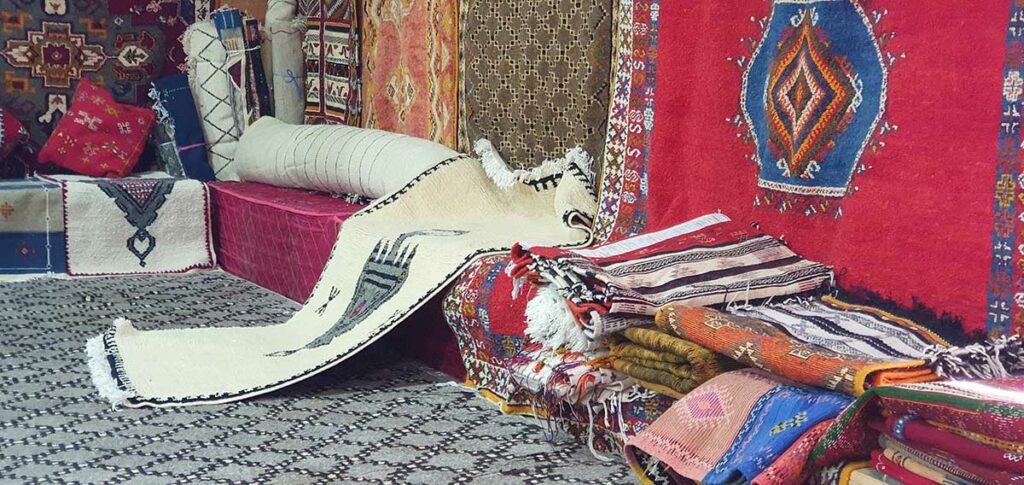
The weaving of a carpet is steeped in a series of rituals and practices.
From shearing to warping, wool is handled with care and worked according to a ritual passed down through generations. After shearing, the wool is left in a discreet corner of the house.
On the eve of the dyeing process, women expose the various baths to the starlight to ward off malevolent forces. The weaver fumigates the wool, ready to be dyed, and hides it away from prying eyes, then purifies herself as she does for her daily prayers.
The next day at dawn, the weaver returns to the bath to begin the weaving after uttering “Bismillah” (In the name of God).
Once the carpet is finished on its loom, cutting the warp threads that structure it gives rise to various rituals. Often only the weaver can perform this operation, and the door must remain closed until it is completed.
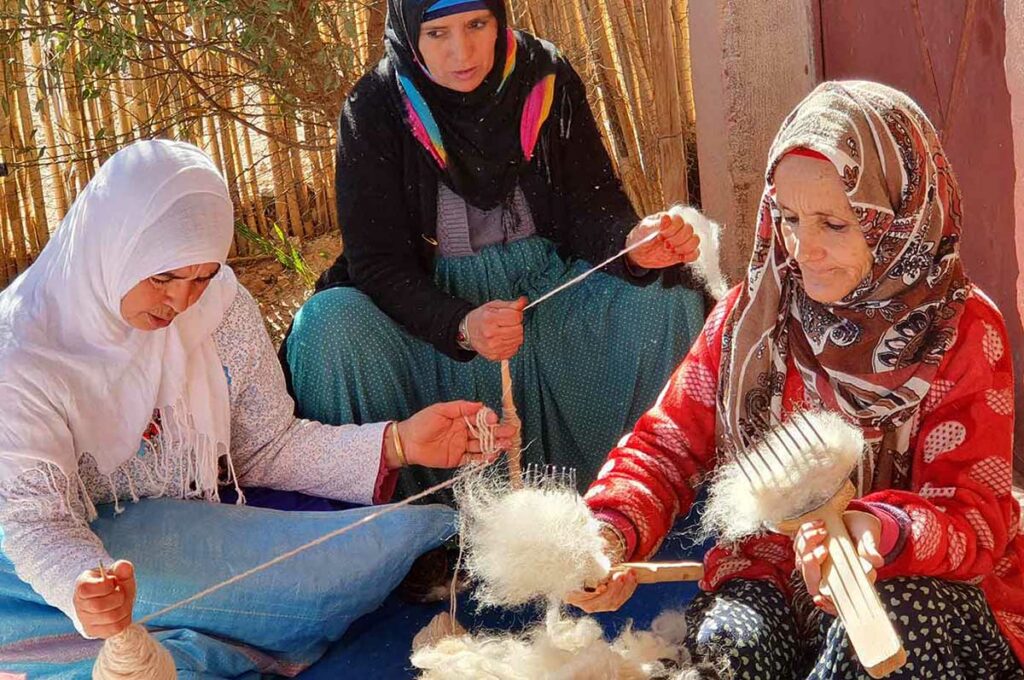
Spin, spin, my spindle,
My spindle of fine, polished wood,
Spin faster and faster,
So fast that you would escape my eyes…
Spin! You need not slow down,
For my nimble fingers shall feed you
As you whirl,
And they shall not ask for respite…
Spin, spin, my long spindle!
Wind the white silky thread,
The soft wool that excels for the weft…
Spin, spin, my small spindle!
Wind the sturdy white thread,
The rough wool that demands the warp…
White fleece, wind yourself
For the good of the household!
Neither now nor later on the loom
When my daughter passes three times under the azeta*…
Spin, spin faster between my fingers,
White wool that weighs down my spindle!
For the household, is there anything more precious?
O white, gray, or black wool, may your blessing be upon us
With the help of the merciful and compassionate God!
Mririda – N’Aït Attik – Songs of the Tassaoute (translated by René Euloge)
* Azeta: Amazigh loom
The web magazine southeast-morocco.com is setting up a new service to provide a direct link with Moroccan women from the Amazigh tradition who are experts in the art of carpet weaving.
You will get to know the artisan within her living environment and territory, you can place an order for the carpet of your choice, you will remotely follow its fabrication…
Southeast-morocco.com is the English version of the web magazine sudestmaroc.com.
© 2024 southeast-morocco.com. All rights reserved.